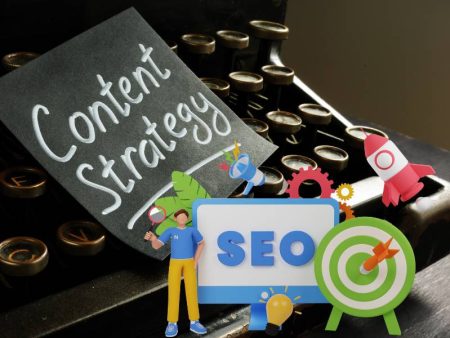Let me ask you: have you ever cringed at your own meta title? Stuff like, “Home – Company – Your #1 Choice!” Yeah, we’ve all been there. Or worse—a description that rambles on for 200 characters, stuffed with keywords, and sounds robotic. But in 2025, AI tools offer a smarter route—drafting meta titles and descriptions that are on-brand, engaging, and optimized faster than you can say “SERP.”
Today, we’ll explore how tools like AI SEO Content Creator and AI SEO Article Generator help automate your SEO metadata—with speed, style, and human decision in the loop. We’ll share real-world examples, creative dialogue, pitfalls to dodge, and how to keep a natural, empathetic tone.
Why Meta Tags Still Matter
Even in the era of AI, meta titles and descriptions matter—they’re your website’s first handshake with searchers.
- The title tag affects click-through and keyword relevance
- The meta description holds attention and sets expectations
- Both feed into brand impression and user trust
But crafting them manually is tedious. You write 50 titles, test snippets, optimize length, avoid truncation—all while keeping voice and clarity in check. It’s a hamster wheel. Enter AI.
AI Tools at Work
Two tools are leading the charge:
- AI SEO Content Creator: great for generating SEO‑friendly titles and descriptions based on page content
- AI SEO Article Generator: more robust—drafts full articles and suggests metadata in context
How does it play out? Let me walk you through a non-linear example.
Dialogue with AI: Real Sample
I was optimizing a blog post about urban herb gardening. Here’s how I used AI SEO Content Creator:
Me: “Generate a title under 60 chars focusing on benefits of balcony herb gardening.”
AI:
“Grow Fresh Herbs on Your Balcony: Easy Guide”
Me: “Nice. Now a meta description under 155 chars—emphasize stress relief.”
AI:
“Want fresh herbs and stress relief? Learn simple balcony herb tips that bring joy & flavor to your small space.”
Me: “Perfect. But can you add a call‑to‑action like ‘start today’?”
AI:
“Looking for fresh herbs and stress relief? Start your balcony garden today with simple, joy‑filled tips.”
These felt like human drafts—natural, engaging, not SEO spam.
When to Switch to AI SEO Article Generator
That tool generated the full draft article—headings, intro, bullet points. Alongside, it offered title and description suggestions aligned to draft angle:
- Title: “Urban Herb Gardening Tips for Small Spaces”
- Description: “Discover easy ways to grow herbs in tiny balconies—boost mood, flavor meals.”
It’s helpful to generate everything in context, then refine. I typically compare suggestions from both tools and pick the best fit—maybe merging punch of first title with clarity of second.
Non‑Linear Workflow = Better Output
This isn’t a step-by-step procedure. It’s more:
- Draft content via AIArticleGenerator
- Use ContentCreator to produce meta variants
- Human edit for voice, brand hint, and nuance
- Plug into CMS, preview SERP snippet
- A/B test two versions, monitor click-through
- Apply winner to similar pages
That spiral—generate, refine, test, iterate—creates better results than content-first or metadata‑by‑handoff approaches.
Emotional Nuance in Metadata
Don’t neglect the emotional tone. A bland meta like “Guide to Growing Basil” might rank, but won’t convert. Instead:
- Personal touch: “Find joy in fresh basil from your balcony”
- Empathy: “Stressed? Garden herbs to calm your mind, even if space is tiny”
Those invite attention—not just clicks.
When feeding content into AI SEO Article Generator, you can ask:
Me: “Give me a headline with playful tone and empathy.”
That helps metadata match content tone.
Pitfall Watch: Don’t Get Spammy
AI can fall into traps—I’ve seen:
- Keyword stuffing: “Grow basil grow mint basil plant”
- Brackets and clickbait: “[FREE GUIDE] Grow herbs now”
- Clichés: “Game-changing secret…”
Fix with quick human edit:
- Remove redundant words
- Replace clickbait jargon with clear value
- Tighten to pixel‑safe length for mobile (about 50–60 chars for title, 140–155 for description)
That polish makes AI-generated text feel quality—not gimmicky.
Real-World Usage: Travel Agency Case
My friend runs a small travel agency focusing on road trip packages. She used this workflow:
- Prompt AIArticleGenerator for trip articles
- Extract metadata with ContentCreator
- Human refine tone to reflect her brand warmth
- A/B test ~10 meta variants across seasons (“Summer Road Trip Deals”, “Fall Foliage Routes”)
She saw click-through rate climb from 3.2% to 4.8% across her site—enough to justify ad spend and effort.
x
Pause moment: human craft—like emotional tone—makes the AI magic stick. Never skip that step.
x
Without your personal touch, metadata can feel hollow. Your brand voice matters.
Testing Metadata in Live SERPs
Two strategies:
- A/B test titles in CMS: many platforms support switching it dynamically and capturing click-through differences
- Google Search Console: see which meta description variants receive more impressions/clicks over time
Let metadata breathe and adapt based on live performance—not just guesses.
Beware API Hallucinations
Sometimes AI invents publication dates or bogus quotes in metadata. Always:
- Double-check urls or stats included
- Remove hallucinated specifics (“in 2026 you’ll grow basil like this”)
- Replace with accurate info
Regain trust by being truthful.
Bulk Automation with Safeguards
Need to optimize 200 product pages? Use AI pipeline:
- Export page titles/blurbs
- Batch prompt AI SEO Content Creator
- Review outputs in spreadsheet
- Validate a subset manually
- Upload via import script
It saves time—but only if you check samples to catch errors, tone mismatches, or hallucinations.
Meta Metadata: Tag It in Analytics
Add properties in your tracking schema:
plaintext
CopyEdit
meta_type: ai_generated | human_refined
meta_date: 20250315
It helps you track which pages used AI-generated metadata—so you can measure performance and iterate responsibly.
Ethical Use and Transparency
Some argue: is it misleading to have AI generate content that appears perfectly human? I think it’s fine—if:
- You verify accuracy
- You add value
- You retain authorship and brand voice
People like helpful descriptions—don’t scare them away with robotic tone.
But if your metadata is obviously generated with no care…it shows.
The Future: Smarter, Responsive Metadata
Soon we’ll see dynamic metadata that adapts by user location, season, or search query snippet—and AI tools are already prototyping this:
- Change title from “Holiday in Italy” to “Winter Holiday in Italy” depending on query
- Inject CTA variations: “Book now” vs “Plan your trip” based on A/B performance
That’s next-level personalization, but still guided by human intent and guardrails.
Final Thoughts
Automating meta descriptions and title tags with tools like AI SEO Content Creator and AI SEO Article Generator can save serious time, improve click-through rates, and give creative ideas. But they can’t replace your voice, your empathy, your brand nuance.
Use AI for drafts—then apply:
- Authentic tone
- Honest phrasing
- Factual accuracy
- Emotional resonance
That human-AI blend gives you optimized metadata that works and connects.
TL;DR
- Automate metadata drafts using AI SEO tools
- Humanize and refine to match tone and brand
- Avoid spammy or generic phrasing
- A/B test or monitor performance
- Tag and track AI-generated metadata responsibly
- Respect user trust—be accurate, be authentic
Over to You
What’s your metadata hack now? Have you tried AI-generated titles and descriptions yet? I’d love to hear which line boosted your CTR—or which felt off-brand. Share your wins, your facepalms, your creative tweaks—I’d love to celebrate your success (and commiserate over your slip-ups). Together, we make SEO smarter—and more human.
Let me ask you: have you ever cringed at your own meta title? Stuff like, “Home – Company – Your #1 Choice!” Yeah, we’ve all been there. Or worse—a description that rambles on for 200 characters, stuffed with keywords, and sounds robotic. But in 2025, AI tools offer a smarter route—drafting meta titles and descriptions that are on-brand, engaging, and optimized faster than you can say “SERP.”
Today, we’ll explore how tools like AI SEO Content Creator and AI SEO Article Generator help automate your SEO metadata—with speed, style, and human decision in the loop. We’ll share real-world examples, creative dialogue, pitfalls to dodge, and how to keep a natural, empathetic tone.
Why Meta Tags Still Matter
Even in the era of AI, meta titles and descriptions matter—they’re your website’s first handshake with searchers.
- The title tag affects click-through and keyword relevance
- The meta description holds attention and sets expectations
- Both feed into brand impression and user trust
But crafting them manually is tedious. You write 50 titles, test snippets, optimize length, avoid truncation—all while keeping voice and clarity in check. It’s a hamster wheel. Enter AI.
AI Tools at Work
Two tools are leading the charge:
- AI SEO Content Creator: great for generating SEO‑friendly titles and descriptions based on page content
- AI SEO Article Generator: more robust—drafts full articles and suggests metadata in context
How does it play out? Let me walk you through a non-linear example.
Dialogue with AI: Real Sample
I was optimizing a blog post about urban herb gardening. Here’s how I used AI SEO Content Creator:
Me: “Generate a title under 60 chars focusing on benefits of balcony herb gardening.”
AI:
“Grow Fresh Herbs on Your Balcony: Easy Guide”
Me: “Nice. Now a meta description under 155 chars—emphasize stress relief.”
AI:
“Want fresh herbs and stress relief? Learn simple balcony herb tips that bring joy & flavor to your small space.”
Me: “Perfect. But can you add a call‑to‑action like ‘start today’?”
AI:
“Looking for fresh herbs and stress relief? Start your balcony garden today with simple, joy‑filled tips.”
These felt like human drafts—natural, engaging, not SEO spam.
When to Switch to AI SEO Article Generator
That tool generated the full draft article—headings, intro, bullet points. Alongside, it offered title and description suggestions aligned to draft angle:
- Title: “Urban Herb Gardening Tips for Small Spaces”
- Description: “Discover easy ways to grow herbs in tiny balconies—boost mood, flavor meals.”
It’s helpful to generate everything in context, then refine. I typically compare suggestions from both tools and pick the best fit—maybe merging punch of first title with clarity of second.
Non‑Linear Workflow = Better Output
This isn’t a step-by-step procedure. It’s more:
- Draft content via AIArticleGenerator
- Use ContentCreator to produce meta variants
- Human edit for voice, brand hint, and nuance
- Plug into CMS, preview SERP snippet
- A/B test two versions, monitor click-through
- Apply winner to similar pages
That spiral—generate, refine, test, iterate—creates better results than content-first or metadata‑by‑handoff approaches.
Emotional Nuance in Metadata
Don’t neglect the emotional tone. A bland meta like “Guide to Growing Basil” might rank, but won’t convert. Instead:
- Personal touch: “Find joy in fresh basil from your balcony”
- Empathy: “Stressed? Garden herbs to calm your mind, even if space is tiny”
Those invite attention—not just clicks.
When feeding content into AI SEO Article Generator, you can ask:
Me: “Give me a headline with playful tone and empathy.”
That helps metadata match content tone.
Pitfall Watch: Don’t Get Spammy
AI can fall into traps—I’ve seen:
- Keyword stuffing: “Grow basil grow mint basil plant”
- Brackets and clickbait: “[FREE GUIDE] Grow herbs now”
- Clichés: “Game-changing secret…”
Fix with quick human edit:
- Remove redundant words
- Replace clickbait jargon with clear value
- Tighten to pixel‑safe length for mobile (about 50–60 chars for title, 140–155 for description)
That polish makes AI-generated text feel quality—not gimmicky.
Real-World Usage: Travel Agency Case
My friend runs a small travel agency focusing on road trip packages. She used this workflow:
- Prompt AIArticleGenerator for trip articles
- Extract metadata with ContentCreator
- Human refine tone to reflect her brand warmth
- A/B test ~10 meta variants across seasons (“Summer Road Trip Deals”, “Fall Foliage Routes”)
She saw click-through rate climb from 3.2% to 4.8% across her site—enough to justify ad spend and effort.
x
Pause moment: human craft—like emotional tone—makes the AI magic stick. Never skip that step.
x
Without your personal touch, metadata can feel hollow. Your brand voice matters.
Testing Metadata in Live SERPs
Two strategies:
- A/B test titles in CMS: many platforms support switching it dynamically and capturing click-through differences
- Google Search Console: see which meta description variants receive more impressions/clicks over time
Let metadata breathe and adapt based on live performance—not just guesses.
Beware API Hallucinations
Sometimes AI invents publication dates or bogus quotes in metadata. Always:
- Double-check urls or stats included
- Remove hallucinated specifics (“in 2026 you’ll grow basil like this”)
- Replace with accurate info
Regain trust by being truthful.
Bulk Automation with Safeguards
Need to optimize 200 product pages? Use AI pipeline:
- Export page titles/blurbs
- Batch prompt AI SEO Content Creator
- Review outputs in spreadsheet
- Validate a subset manually
- Upload via import script
It saves time—but only if you check samples to catch errors, tone mismatches, or hallucinations.
Meta Metadata: Tag It in Analytics
Add properties in your tracking schema:
plaintext
CopyEdit
meta_type: ai_generated | human_refined
meta_date: 20250315
It helps you track which pages used AI-generated metadata—so you can measure performance and iterate responsibly.
Ethical Use and Transparency
Some argue: is it misleading to have AI generate content that appears perfectly human? I think it’s fine—if:
- You verify accuracy
- You add value
- You retain authorship and brand voice
People like helpful descriptions—don’t scare them away with robotic tone.
But if your metadata is obviously generated with no care…it shows.
The Future: Smarter, Responsive Metadata
Soon we’ll see dynamic metadata that adapts by user location, season, or search query snippet—and AI tools are already prototyping this:
- Change title from “Holiday in Italy” to “Winter Holiday in Italy” depending on query
- Inject CTA variations: “Book now” vs “Plan your trip” based on A/B performance
That’s next-level personalization, but still guided by human intent and guardrails.
Final Thoughts
Automating meta descriptions and title tags with tools like AI SEO Content Creator and AI SEO Article Generator can save serious time, improve click-through rates, and give creative ideas. But they can’t replace your voice, your empathy, your brand nuance.
Use AI for drafts—then apply:
- Authentic tone
- Honest phrasing
- Factual accuracy
- Emotional resonance
That human-AI blend gives you optimized metadata that works and connects.
TL;DR
- Automate metadata drafts using AI SEO tools
- Humanize and refine to match tone and brand
- Avoid spammy or generic phrasing
- A/B test or monitor performance
- Tag and track AI-generated metadata responsibly
- Respect user trust—be accurate, be authentic
Over to You
What’s your metadata hack now? Have you tried AI-generated titles and descriptions yet? I’d love to hear which line boosted your CTR—or which felt off-brand. Share your wins, your facepalms, your creative tweaks—I’d love to celebrate your success (and commiserate over your slip-ups). Together, we make SEO smarter—and more human.


